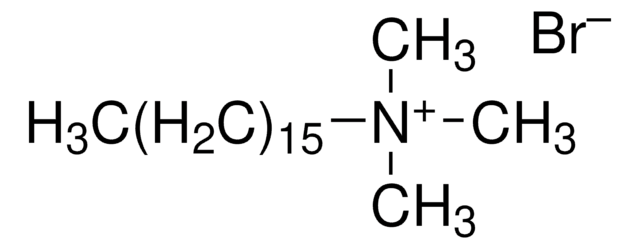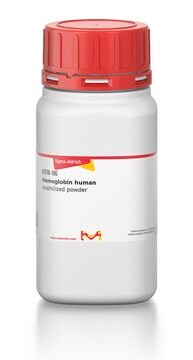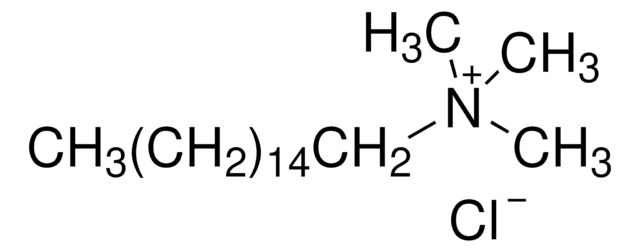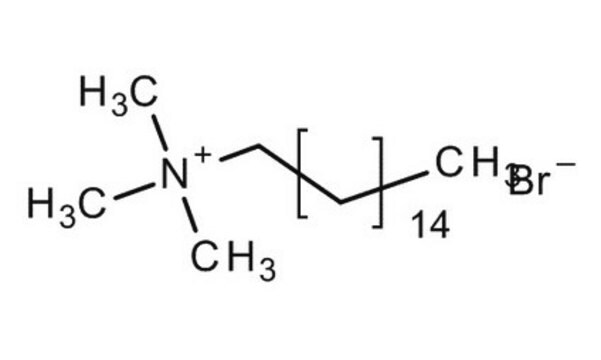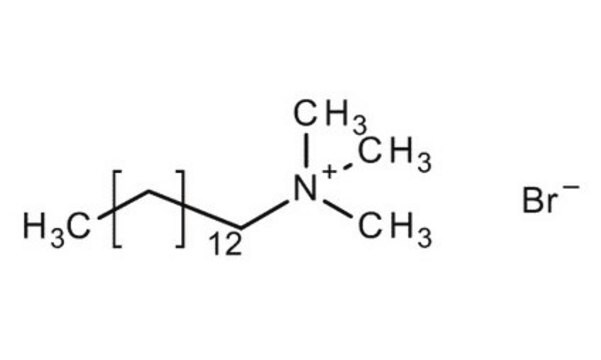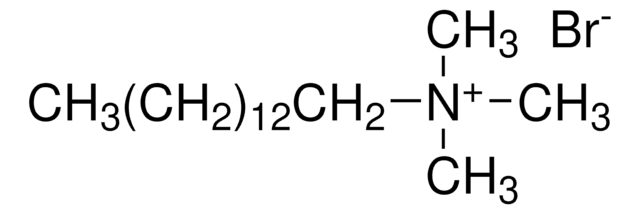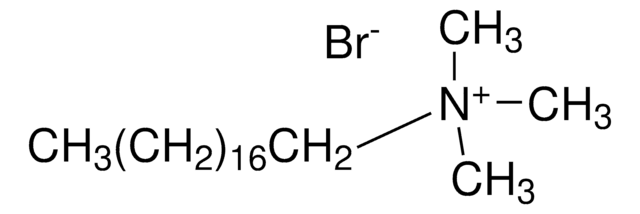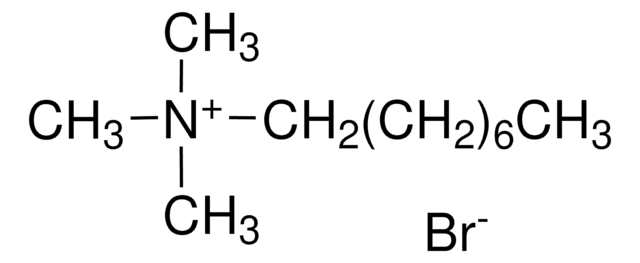H5882
Hexadecyltrimethylammonium bromide
≥98%
Synonym(s):
CTAB, Cetrimonium bromide, Cetyltrimethylammonium bromide, Palmityltrimethylammonium bromide
About This Item
Recommended Products
description
cationic
Quality Level
Assay
≥98%
form
(solids)
mol wt
micellar avg mol wt 62,000
aggregation number
170
technique(s)
DNA extraction: suitable
RNA extraction: suitable
pH
5.0-7 (25 °C, 36.4 g/L)
CMC
0.92 mM (20-25°C)
mp
248-251 °C (lit.)
solubility
H2O: 100 mg/mL
HLB
10
SMILES string
[Br-].CCCCCCCCCCCCCCCC[N+](C)(C)C
InChI
1S/C19H42N.BrH/c1-5-6-7-8-9-10-11-12-13-14-15-16-17-18-19-20(2,3)4;/h5-19H2,1-4H3;1H/q+1;/p-1
InChI key
LZZYPRNAOMGNLH-UHFFFAOYSA-M
Looking for similar products? Visit Product Comparison Guide
General description
Application
- as a component in sodium phosphate buffer to homogenize tissues for determining myeloperoxidase activity
- in the synthesis of gold nanorods with surface plasmon resonance for a comparative study
- in the synthesis of gold nanorods to study the influence of good hexadecyltrimethylammonium bromide (CTAB) and CTAB with iodide impurities on the synthesis
Biochem/physiol Actions
Features and Benefits
- Provides enhancement of concanavalin A mediated agglutination
Disclaimer
Signal Word
Danger
Hazard Statements
Precautionary Statements
Hazard Classifications
Acute Tox. 4 Oral - Aquatic Acute 1 - Aquatic Chronic 1 - Eye Dam. 1 - Skin Irrit. 2 - STOT RE 2 Oral - STOT SE 3
Target Organs
Gastrointestinal tract, Respiratory system
Storage Class Code
11 - Combustible Solids
WGK
WGK 3
Flash Point(F)
471.2 °F - closed cup
Flash Point(C)
244 °C - closed cup
Personal Protective Equipment
Choose from one of the most recent versions:
Already Own This Product?
Find documentation for the products that you have recently purchased in the Document Library.
Customers Also Viewed
Our team of scientists has experience in all areas of research including Life Science, Material Science, Chemical Synthesis, Chromatography, Analytical and many others.
Contact Technical Service